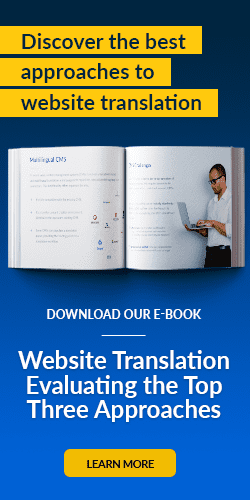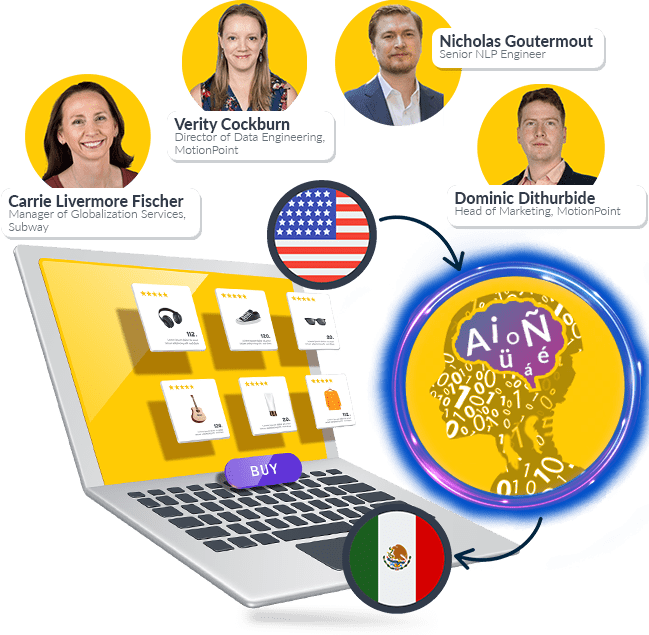For the uninitiated-and even for veteran companies that have been conducting global business online for years-website translation is very complicated from a technical and organisational perspective.
For newcomers, the path is fraught with unknowable pitfalls. For veteran companies, the risk lies in continually using expensive processes and technologies that don't just deserve another look-they should be jettisoned altogether.
Read on to discover why, and the new solutions that eliminate those risks and needless effort.
Understanding the Risks
Companies currently serving, or wanting to serve, global online customers often ignore the promise of the industry-leading approach to website translation: the fully turn-key proxy-based solution.
It's difficult to understand why. This approach eliminates effort and dramatically reduces costs, thanks to technologies, people and processes that fully manage the translation and operation of multilingual websites.
The turn-key proxy approach eliminates effort and reduces costs, thanks to leading technologies, people and processes.
Instead, global marketing newcomers often ponder using expensive, inefficient vendors or labour-intensive in-house solutions. And veteran global companies defend their continued use of problematic legacy approaches, insisting it's "too late" to change due to the considerable investment they've already made in their painful, inefficient processes. That's wrongheaded. Companies should proactively plan for internationalization when they define their digital infrastructures. Treating internationalization as an afterthought often leads to costly mistakes.
For instance, deploying and operating multilingual websites requires an unexpected variety of tasks, personnel and technologies. This generates an exponential increase of in-house effort, as well as hidden expenses well beyond mere translation. When companies don't have the proper staff, technologies or expertise to properly handle website localisation projects, they're usually outclassed by the workload and technical burden.
When you ignore-or don't know about-these challenges, you're forced to create incredibly complex and costly processes to accommodate them. You're soon managing convoluted translation processes and using home-brewed or undercooked technologies. None of this is optimised to deliver website localisation at the scale, or speed, your business needs.
However, there is an upside to this epic effort and expense. You can still switch to a lean solution. It’s never too late to embrace a turn-key, proxy-based approach.
No matter how much you’ve invested in the wrong solution, it’s never too late to switch to the proxy-based approach.
Advice for Newcomers
When entering the global marketplace, it may be tempting to dismiss an automatic solution and instead manage the website translation project in-house, or with a traditional translation agency.
There are a few very good reasons not to do this:
- Owning and managing a highly complicated, error-prone translation workflow is demanding and labour-intensive
- Growing your internal team to handle this increased workload is expensive
- Fielding on-going technology requests from your Marketing team distracts your IT team from core tasks
- Errors and delays in translations will damage your brand in global markets
If you're just starting to work toward globalised websites, consider an automatic solution like the turn-key proxy approach. The best vendors are able to get your site fully translated-in as many languages as you need, in as many markets as you need-in as little as 30 days.
And they can do this without the need to create custom workflows, purchase new technologies, or hire more staff.
The best proxy vendors can fully translate and deploy your website in as little as 30 days.
Advice for Those Who’ve Taken the Plunge
Even if you’ve gone through the transition of buying technologies, creating custom workflows, or hiring additional personnel to manage your website translation projects—and shouldered the great expense of doing so—there’s no rational reason to continue to use inefficient processes.
The long-term view for these legacy approaches isn't good. You're going to continue to:
- Spend even more time and money ensuring your translation programme is compatible with your CMS and other technologies
- Experience costly delays in localising on-site applications and third-party content (such as e-commerce modules)
- Own added responsibility of localising backend assets like interactive product catalogues.
- Handle multimedia translation for images, PDFs, apps, and video—or worse, leave these untranslated and risk hurting your brand
Patching your old solution to meet current and future demands means you're throwing good money after bad. A fully turn-key proxy solution lets your team focus their skills and resources where they are best used-in creating the best possible customer experience on your flagship primary-market website.
Don't throw good money after bad. Turn-key proxy solutions leave your internal teams to focus on what they're great at.
Conclusion
In contrast, fully turn-key solutions are practically magical compared to the complex processes most companies and translation agencies cook up. By going with a digital-first translation vendor, you can:
- Shed the burden of project management and technical development
- Stop struggling to stay fluent in the latest technologies.
- Stop patching up systems that no longer meet your needs.
- Stop re-translating the same material (proxy solutions provide effortless migration of translation memory and robust change-detection technology)
- Stop doing your vendor’s work for them—instead let them work for you
Best of all, turn-key solutions simplify your life by saving you the effort and expense of updating your technology, and onboarding new staff to handle growth.
Last updated on December 20, 2017


